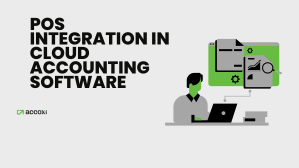

August 09, 2021

Quarterly Return Filing and Monthly Payment of Taxes (QRMP) scheme under GST introduced by CBIC for the small scale business entities having an aggregate turnover of up to Rs.5 crore to file returns on a quarterly basis in addition to monthly tax payment. The taxpayer is required to file only 8 returns in a year compared to 16 returns earlier.
A registered taxpayer who is needed to file a return in GSTR 3B and having an aggregate turnover of up to 5 crores in the previous financial year is eligible for the QRMP scheme under GST. Besides, if the turnover exceeds Rs 5 crore in the course of any quarter in the ongoing financial year, the person would not be eligible for GST quarterly return from the next quarter.
It is to be noted that the aggregate annual turnover for the previous financial year would be assessed in the portal taking note of details given in the return by the tax period in the previous financial year.
The quarterly GSTR 3B filing option was made available from 1st January 2021 onwards. This scheme is optional and could be availed on the basis of GSTIN. Let us see how to file Quarterly GST return in detail.
A taxpayer who wants to file his GSTR3B quarterly has to show it on the GST portal, from the 1st of the second month of the previous quarter until the last day of the first month for that such option is being exercised.
When the taxpayer opts for GST quarterly return filing, he has to furnish every quarter for all the tax periods. Some exceptions are there:
In case the last return has not been provided, that was due on the date for exercising the option, a taxpayer would be ineligible to opt for furnishing quarter returns.
The taxpayer should go through the above-mentioned procedure to opt for the GSTR3B
quarterly. If the registered taxpayer under the category mentioned on the table below, who has provided a return for August 2021 by 30 September 2021, should be assumed that they have chosen for the monthly or GST quarterly return filing as detailed below.
|
SL.NO |
Class of Registered Persons |
DEEMED OPTIONS |
| 1. |
Registered taxpayers with a total turnover of up to Rs.1.5 crore, who have submitted Form GSTR-1 quarterly in the current financial year. |
Quarterly GSTR-3B |
| 2. |
Registered taxpayers with a total turnover of up to Rs.1.5 crore, who has submitted Form GSTR-1 monthly in the current financial year |
Monthly GSTR-3B |
| 3. |
Registered taxpayers having a turnover exceeding Rs.1.5 crore and up to Rs.5 crore in the previous financial year |
Quarterly GSTR-3B |
The registered taxpayer who has been chosen for the QRMP scheme under GST could use the Invoice Furnishing Facility (IFF) that allows quarterly GSTR 1 filers to upload their invoices every month. Please consider the following suggestions before going for IFF.
The registered taxpayer has to pay tax with the form PMT 06 by the 25th of the succeeding month, for the first and second months of the quarter. They could pay their monthly tax liability either in the Fixed Sum Method (FSM), also known as the 35% challan method or through Self Assessment Method (SAM).
Here in the Fixed Sum Method, the taxpayer has to pay the tax amount in a pre-filled challan in the GST PMT 06 form for an amount same as 35 % of the tax paid in cash.
| No |
Taxpayer |
Tax payment |
| 1. |
The taxpayer who has submitted GSTR 3 B quarterly for the last quarter. |
35% of the tax paid in liquid in the previous quarter. |
| 2. |
The taxpayer who has submitted GSTR3B monthly during the last quarter |
100% of tax paid in liquid in the last month of the immediately previous quarter. |
Under the Self Assessment Method (SAM), the taxpayer could pay the tax liability by reckoning with the tax liability on inward and outward supplies and ITC at disposal. The taxpayer is required to arrive manually at the tax liability for the month and is supposed to pay it with PMT 06 Form. In addition, to determine the ITC amount at disposal for the month, the taxpayer could proceed with GSTR 2B form.
Some instances are there wherein no amount is needed to be deposited like:
It is to be remembered that a registered taxpayer would be ineligible for the procedures if he has not filed the return for the complete tax period of such a previous month. A complete tax period means that it is a tax period where the person is registered from the first till the end day of the tax tenure.
GST quarterly return due date for filing quarterly GSTR 3B has been notified as in states and union territories.
|
No |
States and union territories |
Due date |
| 1. |
The taxpayer’s principal place of business is in the states & Union territories. Chhattisgarh, Madhya Pradesh, Gujarat, Dadra and Nagar Haveli, Daman and Diu, Maharashtra, Karnataka, Goa, Lakshadweep, Kerala, Tamil Nadu, Puducherry, Andaman, and Nicobar Islands, Telangana, and Andhra Pradesh |
22nd of the month following such quarter |
| 2. |
The taxpayer’s principal place of business is in the states & Union territories. Jammu and Kashmir, Ladakh, Himachal Pradesh, Punjab, Chandigarh, Uttarakhand, Haryana, Delhi, Rajasthan, Uttar Pradesh, Bihar, Sikkim, Arunachal Pradesh, Nagaland, Mizoram, Manipur, Tripura, Meghalaya, Assam, West Bengal, Jharkhand, and Odisha |
24th of the month following such quarter |
There are no procedural differences in the procedures in the way ITC is claimed by a registered taxpayer choosing the QRMP scheme under GST. The QRMP taxpayers who chose the self-assessment method to calculate the tax payments for the first two months of the quarter could reckon on the ITC at their disposal in accordance with their GSTR 2B for the month.
Subsequently, they could pay the balance as cash against the GST liability. Whereas, following upon the GSTR1 quarterly filing, GSTR 2B for the quarter is generated on the 14th of the month. So the buyers handling the vendors under the scheme are required to pay the quarterly GSTR 2B for ITC claims.
The interest payment would be applicable as below in case the taxpayer chooses either Fixed Sum Method (FSM) or Self Assessment Method (SAM).
| No | Cases | Interest |
| 1. |
Tax liability given in prefilled form GST PMT 06 is paid by the 25th of the succeeding month. |
Nil |
| 2. |
Tax liability given in prefilled form GST PMT 06 is not paid by the 25th of the succeeding month. |
18% of tax liability( from 26th of the succeeding month until the payment date) |
| 3. |
The final tax liability for the first two months is less than or equal to the payment made through prefilled form GST PMT 06. |
Nil |
| 4. |
The final tax liability for the first two months is higher than the payment made through prefilled form GST PMT 06, and that excessive liability has been paid within the due date of quarterly GSTR-3B |
Nil |
| 5. |
The final tax liability for the first two months is higher than the payment made through prefilled form GST PMT 06, and that excessive liability has not been paid within the due date of quarterly GSTR-3B |
18% of tax liability(From the due date of GSTR 3B till the payment date. |
The interest would also be there in case of the taxpayer choosing for Self Assessment Method (SAM).
The registered taxpayer must make a payment of 18% interest on the net tax liability that is unpaid or paid delay after the due date for the first two months of the quarter.
It is to be noted that the taxpayer should pay an 18% interest, in case of late payment in the third month of a quarter. It is applicable whether it is the Fixed Sum Method (FSM) or Self Assessment Method (SAM).
The late fee has to be paid unless quarterly GSTR 3B is filed within the due date, subject to a maximum late fee of Rs 5000.
|
Name of the GST Act |
Late fee for the delay on the daily basis |
Late fee for the delay on the daily basis( If ‘nil’ tax liability) |
|
CGST |
Rs.25 |
Rs.10 |
|
SGST |
Rs.25 |
Rs.10 |
|
IGST |
Rs.50 |
Rs.20 |
Anyway, no late fee is applicable for the tax payment delay in the first two months of the quarter in Form PMT06.
Follow the steps to change the return filing status from monthly to quarterly.




